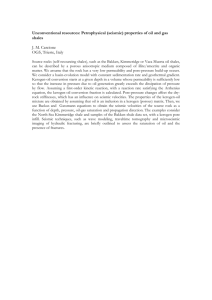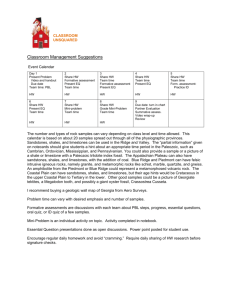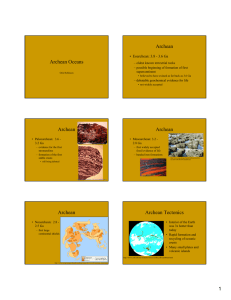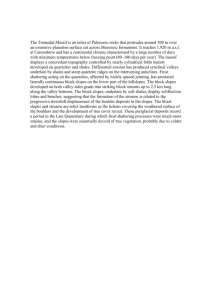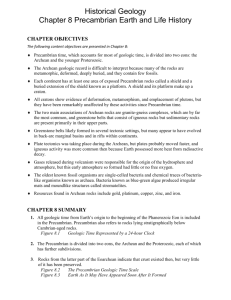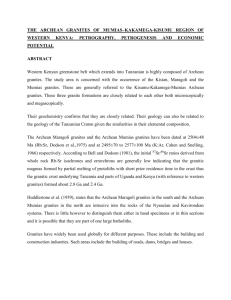Significance of sulfidic organic
advertisement
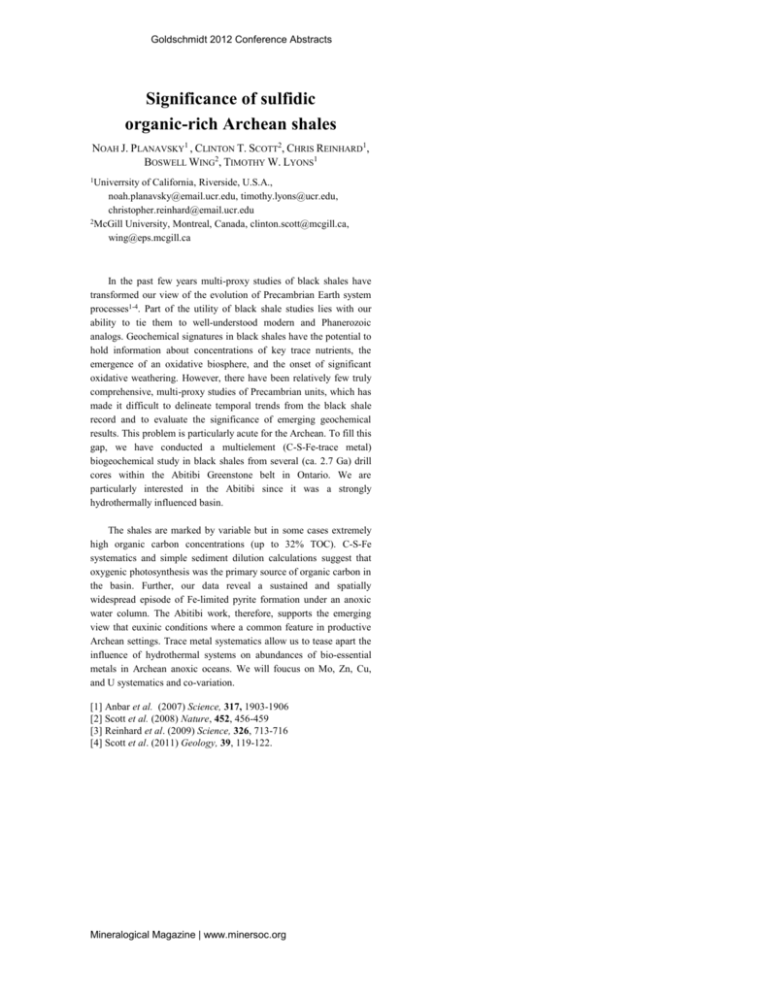
Goldschmidt 2012 Conference Abstracts Significance of sulfidic organic-rich Archean shales NOAH J. PLANAVSKY1 , CLINTON T. SCOTT2, CHRIS REINHARD1, BOSWELL WING2, TIMOTHY W. LYONS1 1Univerrsity of California, Riverside, U.S.A., noah.planavsky@email.ucr.edu, timothy.lyons@ucr.edu, christopher.reinhard@email.ucr.edu 2McGill University, Montreal, Canada, clinton.scott@mcgill.ca, wing@eps.mcgill.ca In the past few years multi-proxy studies of black shales have transformed our view of the evolution of Precambrian Earth system processes1-4. Part of the utility of black shale studies lies with our ability to tie them to well-understood modern and Phanerozoic analogs. Geochemical signatures in black shales have the potential to hold information about concentrations of key trace nutrients, the emergence of an oxidative biosphere, and the onset of significant oxidative weathering. However, there have been relatively few truly comprehensive, multi-proxy studies of Precambrian units, which has made it difficult to delineate temporal trends from the black shale record and to evaluate the significance of emerging geochemical results. This problem is particularly acute for the Archean. To fill this gap, we have conducted a multielement (C-S-Fe-trace metal) biogeochemical study in black shales from several (ca. 2.7 Ga) drill cores within the Abitibi Greenstone belt in Ontario. We are particularly interested in the Abitibi since it was a strongly hydrothermally influenced basin. The shales are marked by variable but in some cases extremely high organic carbon concentrations (up to 32% TOC). C-S-Fe systematics and simple sediment dilution calculations suggest that oxygenic photosynthesis was the primary source of organic carbon in the basin. Further, our data reveal a sustained and spatially widespread episode of Fe-limited pyrite formation under an anoxic water column. The Abitibi work, therefore, supports the emerging view that euxinic conditions where a common feature in productive Archean settings. Trace metal systematics allow us to tease apart the influence of hydrothermal systems on abundances of bio-essential metals in Archean anoxic oceans. We will foucus on Mo, Zn, Cu, and U systematics and co-variation. [1] Anbar et al. (2007) Science, 317, 1903-1906 [2] Scott et al. (2008) Nature, 452, 456-459 [3] Reinhard et al. (2009) Science, 326, 713-716 [4] Scott et al. (2011) Geology, 39, 119-122. Mineralogical Magazine | www.minersoc.org



